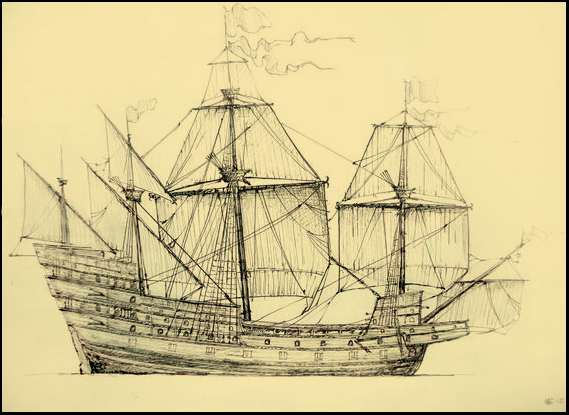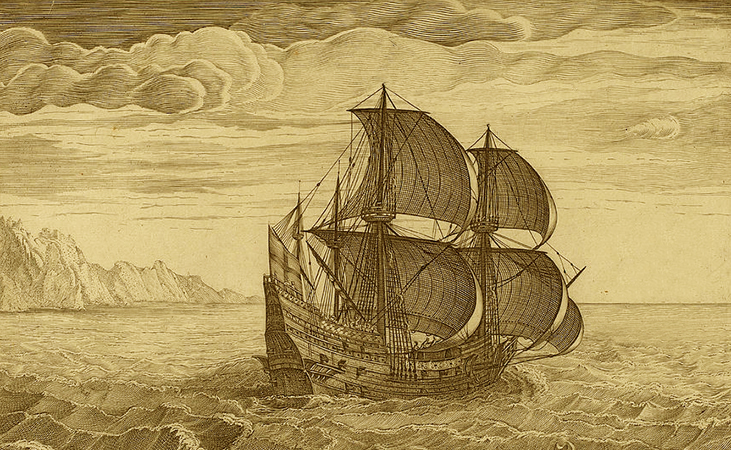Welcome to the beginning of a new year. The Chinese apparently have a saying that they trot out regularly for the (Chinese) New Year that translates into English as: Congratulations!—as in: Congratulations on having survived another year!
So congratulations, all you survivors.
And speaking of survivors… I thought I’d launch this year with excepts from a captivity narrative written by a survivor—a Portuguese soldier named João de Carvalho Mascarenhas who endured five years as a slave in Algiers in the first quarter of the seventeenth century. Like a number of other European captives who survived enslavement and managed eventually to return home, Mascarenhas wrote a narrative describing his experiences. The Portuguese tile of this book is:
Memorável relaçam da perda da Nao Conceição que os Turcos queymárão à vista da barra de Lisboa vários sucessos das pessoas, que nella cativarão, E descripção nova da Cidade de Argel & de seu governo & cousas muy notáveis acontecidas nestes ultimos annos de 1621 atè 1626.
(Memorable Account of the Loss of the Ship Conceiçam that the Turks Burned in Sight of the Bar of Lisbon; Including the Successes of Several People Who Were Captured, Plus a New Description of the City of Algiers and of its Government and a Description of the Very Remarkable Things that Happened Between the Years 1621 and 1626.)
João Mascarenhas served as a soldier for the Portuguese crown in a wide variety of locations. By his own account, before he had reached the age of thirty, he had been to Brazil, Mozambique, various places along the east coast of Africa as far north as the shores of the Red Sea, the Middle East (where he saw the waters of the Tigris and the Euphrates Rivers), Persia, Mongolia, and India, where, among other places, he visited the Ganges.
In March of 1621, after completing a tour in the Portuguese controlled territory in India, Mascarenhas embarked from Goa on the Nossa Senhora da Conceição (Our Lady of Conception), a large carrack that was returning to Portugal. (See the map below for the location of Goa.)
Carracks were, for the time, very large ships—sort of the seventeenth century equivalent of a container ship. They had high ‘castles’ at the bow and stern, three or four masts, and capacious holds (in order to carry the various sorts of treasure the Portuguese had looted from the Indian subcontinent and the Spice Islands further east). (See the illustration of a carrack below.)
 The voyage between India and Portugal was notoriously dangerous, for not only were the ships that attempted it threatened by storms en route, but since they were crammed with expensive merchandise—spices, silks, treasure of many sorts—they were the target of all manner of pirates as well. Some estimates are that ten to twenty percent of the Portuguese carracks that left India never made it to Portugal.
The voyage between India and Portugal was notoriously dangerous, for not only were the ships that attempted it threatened by storms en route, but since they were crammed with expensive merchandise—spices, silks, treasure of many sorts—they were the target of all manner of pirates as well. Some estimates are that ten to twenty percent of the Portuguese carracks that left India never made it to Portugal.
Moreover, conditions aboard ship were atrocious. Not only was the Conceição crammed with treasure; it was crammed with people as well. The vessel was perhaps 150 feet (45 meters) long by something like 30 feet (9 meters) wide (though it is hard to know for sure, since Mascarenhas didn’t provide us with exact dimension). Into this rather modest-sized vessel (by modern standards), somewhere between six and eight hundred people—sailors, soldiers, and passengers—were packed. The voyage lasted slightly over seven months, during which time bad food, bad water, overcrowding, and disease took a ruthless toll.
Despite the dangers and adverse conditions aboard, the Conceição made the voyage successfully, and Mascarenhas managed to survive it.
The route back to Portugal took the Conceição across the Arabian Sea, down the east coast of Africa and round the Cape of Good Hope on Africa’s southern tip. From there, forced to follow the prevailing winds, it ended up at the island of Saint Helena (the place where Napoleon was incarcerated and died), where it stopped to replenish water and supplies and to make repairs (see the map below for locations of the places mentioned and for the sailing route).
Following the winds again, the Conceição headed for the Azores. While anchored there, the ship’s captain received a letter informing him that a fleet of Algerine corsair ships was cruising the Portuguese coast, but that a squadron of Portuguese ships, under the command of Dom Antonio de Ataide, was in position to escort the Conceição safely into Lisbon harbor.
The Conceição left the Azores and sailed to the Portuguese coast, arriving in the waters near Lisbon in early October. They couldn’t find the Portuguese fleet, and the wind was weak and contrary, and they struggled to make headway, sailing through the night. Just before dawn, they heard the sound of voices ahead in the darkness along with the creaking of ships. They waited for the light of dawn, hoping to see the Portuguese fleet.
The gray radiance of morning, however, revealed a nasty surprise.
At this point, it’s best to let João de Carvalho Mascarenhas tell the story himself.
To my knowledge, the Memorável relaçam da perda da Nao Conceição has never been translated into English before.
So here, for the very first time in English, is the story of João de Carvalho Mascarenhas:
By midnight, we were close to Lisbon, and towards the end of the second watch [i.e., close to 4:00 AM] we heard the sound of people talking ahead, as if our ship had been anchored in a city harbor. Believing that they were in the middle of Dom Antonio de Ataide’s fleet, the Conceição’s crew joyfully set about preparing the ship to drop anchor at Lisbon.
As day broke, they discovered seventeen large ships of thirty to forty guns each. Though they saw clearly that they did not belong to our fleet, they imagined that they were ships laden with salt which had come from Setubal [located about 50 miles/80 kilometers sailing distance south of Lisbon].
These ships, however, were Turkish [i.e., they were Barbary corsair ships].
As soon as the Turks were informed by the Christian sailors they had with them that this ship that had so suddenly appeared was a carrack from India, they held a council, put their boats in the sea to warn each other, deployed their battle flags, and, protected by their shields, formed themselves into battle order.
They fired a warning shot from downwind.
In our naivety, since we had not yet fully grasped what was happening, we kept our illusions—because we could not believe that there could be so many enemies so close to home. Our ship’s captain ordered the flag lowered, but it was quickly hoisted up again when it was understood from their insolence that these ships were enemies.
We fired at their flagship, and the captain of that ship, as soon as he saw that we had no intention of surrendering, took in his mainsails and reefed his spritsails, keeping only the topsails and the mizzen sails. The other ships made the same arrangements, with the intention of attacking our ship and boarding it.
For the next installment of the story of João Mascarenhas, see the next post in this blog.

Corsairs and Captives
Narratives from the Age of the Barbary Pirates
View Amazon listing
The Travels of Reverend Ólafur Egilsson
The story of the Barbary corsair raid on Iceland in 1627
View Amazon listing

